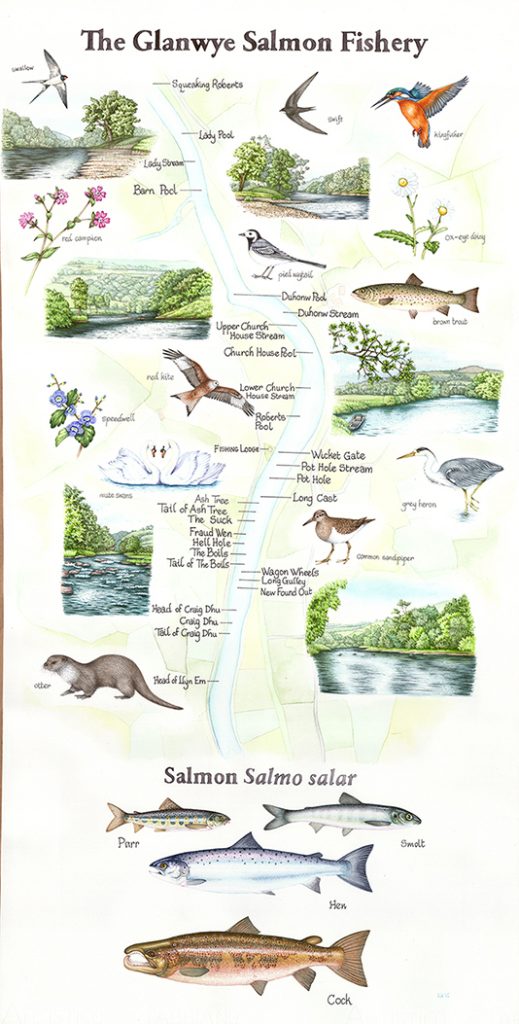Illustrating The Glanwye Fishery
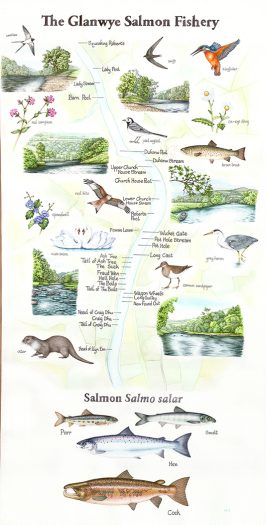
I’ve recently completed a lovely natural history illustration job; doing a series of scientific illustrations to accompany a map of the Glanywye fishing site. This beautiful “beat” is on a stretch of the river Wye.
The Glanwye Fishery is loved by anglers who catch numerous Atlantic salmon and other fish there. It’s run by a group of fishermen who support (and are members of) the Wye and Usk Foundation.
Starting on the Glanwye map
Initially I was shown the existing map of the fishing sites on the Glanwye stretch, and we discussed how we’d like the finished piece to look. It needed to have the river and fishing spots on, but also to include species that were often seen there, and some vignettes of the beautiful views.
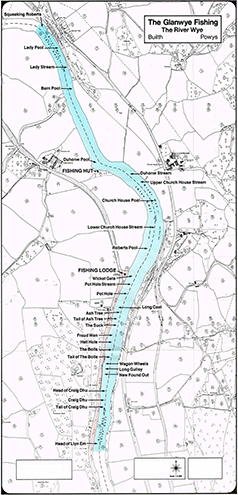
Glanwye Fishery Map
I spent a couple of happy afternoons with a camera and notebook, walking the fishery and deciding on the best views to include. I find landscape painting more challenging than illustrating plants and animals. So wanted to be sure I chose sites that were easily recognisable, and that I’d enjoy painting them.

Photo of Church House Pool
Salmon Life cycle
Various stages of the salmon life cycle needed to be included; I worked these up first of all, and put them at the base of the map.
I learnt a lot from the client and from researching the Atlantic Salmon Salmo salar (please see my blog for more on Salmon life stages).
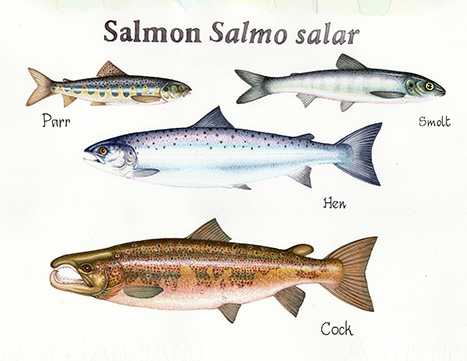
Salmon life stages
What species and landscapes to include on the Glanwye map?
Next came the job of deciding what species of plant and animal to include. My client has an in-depth knowledge of the area, so could easily suggest animals and knew where they were most commonly seen. The otter needed to be at Craig Dhu; the wagtails are much in evidence at Church House Pool. Prevelent species such as red kite, swallow, and kingfisher could be incuded wherever was most convenient. I added a couple of flowers I saw while researching, and then it was time to draw up the pencil rough.
The layout was a challenge as there had to be plenty of room for text, and the landscape vignettes needed to leave room for the plants and animal illustrations. I painted up the river and mapped fields lightly, then began to work on the landscapes.
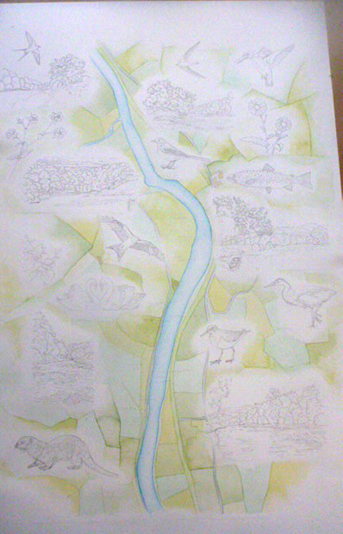
Glanwye Fishery in progress
With rivers, the main object is to try to make the scene look watery, and not to over-paint and swallow too much of the white page with unneccessary colour. I think the view of Church House Pool worked best.
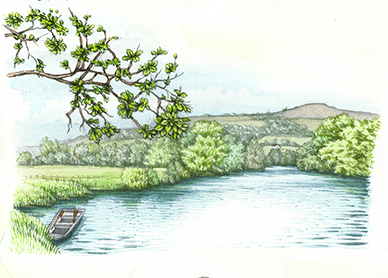
View of Church House Pool
Once I’d done the landscapes it was a joy to work on the animals and plants, ; I began at the top left and worked down the piece. The terror is always that you’ll mess up a detail towards the end, luckily I got away with it. I particularly enjoyed painting the glinting kingfisher and the swans.

Kingfisher Alcedo atthis
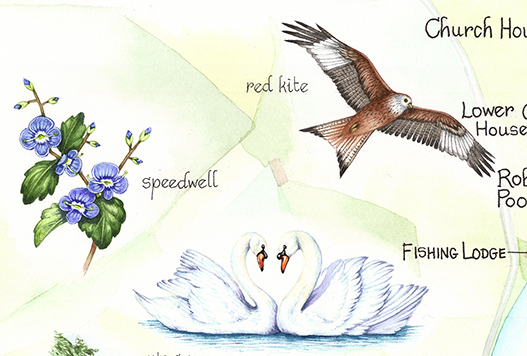
Detail with Speedwell Veronica chamaedrys, Mute swans Cygnus olor & Red kite Milvus milvus
Adding the text
With all the illustration work complete, it was time to consider the text. I traced out the letters for the titles, and painted them up in a dark purplish brown.
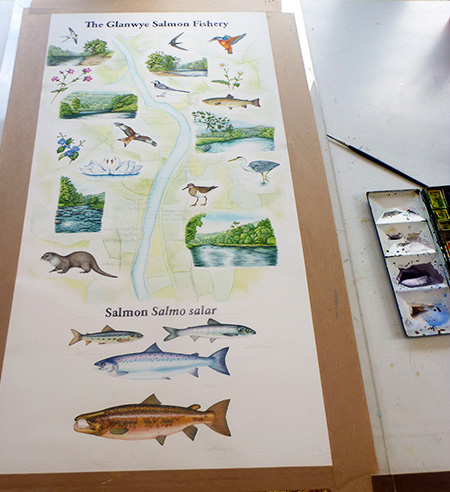
Glanwye Salmon fishery in progress
Then I have to admit to importing help for the remaining lettering.My mother is a fine artist and has always prided herself on her beautiful writing; it seemed the perfect time to use these qualities.
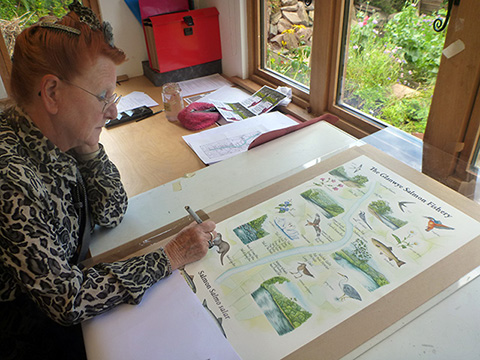
My mother (Susan Harper) helping out by doing the lettering on the Glanwye project
This completed the illustration of the Glanwye fishery. Now all I need to do is figure out how on earth to get such a big piece of work to the client! It was a brilliant job to work on, and I’m really pleased with the end result.
